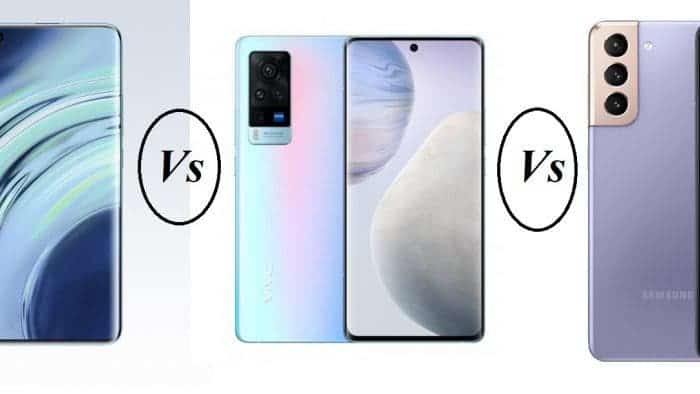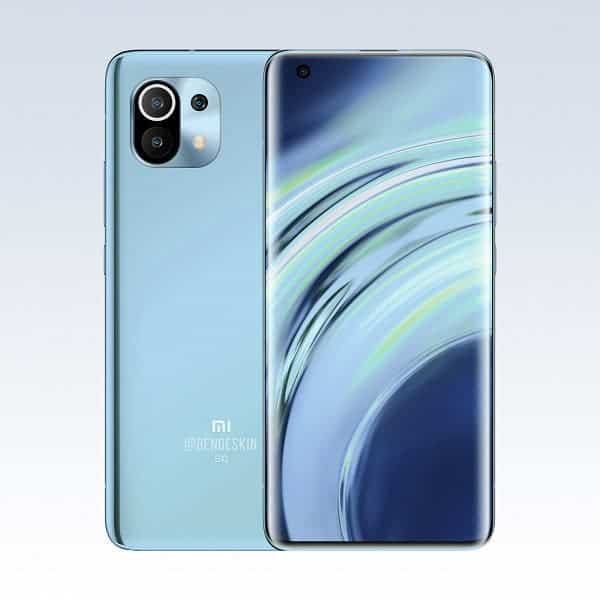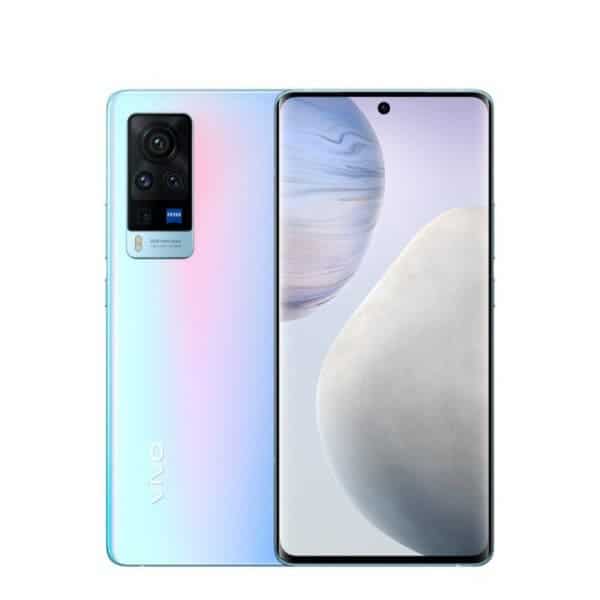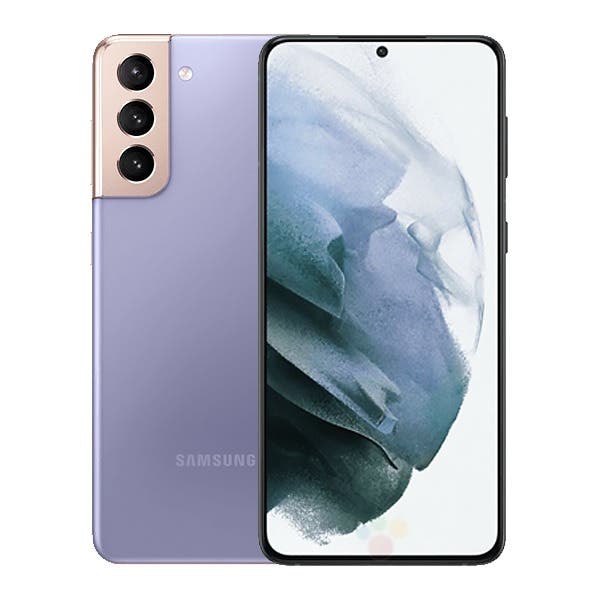A couple of flagship smartphones are already in the market carrying the most advanced performance beast inside them. Many manufacturers are already competing to release flagships with the most advanced processors. The Snapdragon 888, Exynos 1080, and Exynos 2100, all 5nm smartphone chips are the top-performing processors in the market. Interestingly, all these processors use the same Samsung 5nm manufacturing process. While the Xiaomi Mi 11 prides itself as the pioneer device of the Snapdragon 888, Vivo X60 Pro is the pioneer device of the Exynos 1080 while the Galaxy S21+ is a pioneering device of the Exynos 2100. All these smartphones are flagships and we are going to look at their specifications side by side.
There are also flagships like the iQOO 7 and Samsung Galaxy S21/S21 Ultra which we believe will be part of our subsequent comparisons. This comparison looks at the specifications of three smartphones. Of course, the Xiaomi Mi 11 and Vivo X60 Pro were the last devices of 2020 while the Samsung Galaxy S21+ was officially released just yesterday.
Read Also: Xiaomi Mi 11 Vs Vivo X60 – Snapdragon 888 meets Exynos 1080
Xiaomi Mi 11 Vs Vivo X60 Pro Vs Samsung Galaxy S21+ specs sheet
| Xiaomi Mi 11 | Vivo X60 Pro | Samsung Galaxy S21+ | |
|---|---|---|---|
| DIMENSIONS AND WEIGHT | 164.3 x 74.6 x 8.1 mm, 196 g | 158.6 x 73.2 x 7.6 mm, 178 g | 161.5 x 75.6 x 7.8 mm, 200 g |
| DISPLAY | 6.81 inches, 1440 x 3200p (Quad HD+), AMOLED | 6.56 inches, 1080 x 2376p (Full HD+), AMOLED | 6.7 inches, 1080 x 2400 pixels (Full HD), AMOLED |
| PROCESSOR | Qualcomm Snapdragon 888, octa-core 2.84 GHz | Samsung Exynos 1080, octa-core 2.8 GHz | Exynos 2100 (5 nm), Octa-core 2.9GHz and Qualcomm Snapdragon 888, octa-core 2.84 GHz |
| MEMORY | 8 GB RAM, 256 GB – 8 GB RAM, 256 GB – 12 GB RAM, 256 GB | 12 GB RAM, 256 GB | 8 GB RAM, 128GB / 256 GB |
| SOFTWARE | MIUI 12.5 (Android 11) | Origin OS (Android 11) | One UI 3.1 (Android 11) |
| CONNECTIVITY | Wi-Fi 802.11 a/b/g/n/ac/ax, Bluetooth 5.2, GPS, 5G | Wi Fi 802.11 a/b/g/n/ac/ax, Bluetooth 5.1, GPS, 5G | Wi-Fi 802.11 a/b/g/n/ac/6, Bluetooth 5.0, GPS, 5G |
| CAMERA | Triple 108 + 13 + 5 MP, f/1.9 + f/2.4 + f/2.4 20 MP front camera |
Quad 48 + 8 + 13 + 13 MP, f/1.5 + f/3.4 + f/2.5 + f/2.2 32 MP f/2.5 front camera |
Quad 48 + 8 + 13 + 13 MP, f/1.5 + f/3.4 + f/2.5 + f/2.2 32 MP f/2.5 front camera |
| BATTERY | 4600 mAh, fast charging 50W, wireless charging 50W, reverse wireless charging 10W | 4200 mAh, fast charging 33W | 4800 mAh, fast charging 25W, wireless charging 15W, reverse wireless charging 4.5W |
| ADDITIONAL FEATURES | Dual SIM (Nano-SIM, dual stand-by) | Dual SIM (Nano-SIM, dual stand-by) | Single SIM (Nano-SIM and/or eSIM) or Dual SIM (Nano-SIM and/or eSIM, dual stand-by) |
Xiaomi Mi 11 Vs Vivo X60 Pro Vs Samsung Galaxy S21+
Design
Looking at the front, there is no much design difference between the Mi 11 and the Vivo X60 Pro. However, if you love a rounded device, the Mi 11 will be your choice. The Mi 11 uses a more rounded overall design with a curved screen on all four edges and a punch-hole camera to the left of the display. The Vivo X60 Pro on the other hand appears more square-ish with a center punch-hole design. For the Samsung Galaxy S21+, it comes with rounded corners but its overall design is not as round as the Xiaomi Mi 11. These smartphones have a high screen-to-body ratio which is a plus for them. However, the Vivo X60 prides itself as the thinnest 5G phone ever with a thickness of only 7.4mm. While the Xiaomi Mi 11 is 8.1mm thick, the Galaxy S21+ is 7.8mm thick. Only the Galaxy S21+ uses a straight display, the Mi 11 and Vivo X60 Pro uses curved displays.
However, the main design difference is on the rear of these smartphones. The Xiaomi Mi 11 comes with a somewhat original rear camera module design. It is nothing like we have seen in the market before. The camera module has rounded edges and the triple cameras are within this module. The Vivo X60 Pro uses the more regular vertical camera module with three sensors. The main sensor is the large sensor on top while the other two smaller sensors are beneath the main sensor. The Galaxy S21+ also uses a unique rear camera design. Attached to the top left of the rear are three camera sensors and an LED flash lying astride them. This design is as unique and simple as it can be.
Display
On the display capabilities itself, the Xiaomi Mi 11 display seems to be the best. This display is one of the most expensive in the industry. DisplayMate rates the Mi 11 display A+. In addition to the 120Hz refresh rate, this display also supports Quad HD+ resolution, high brightness up to 1500 nits, and HDR10+. This display also uses the Corning Gorilla Glass Victus, supports 1B colors and the pixel density reaches 515.
For the Vivo X60, its AMOLED also supports a 120Hz refresh rate and HDR10. However, the pixel density (398) and display resolution are lower than that of the Mi 11. The Galaxy S21+ comes with a Dynamic AMOLED 2X display with a brightness of up to 1300 nits. It also supports HDR10+, 120Hz refresh rate and its Pixel Density (394) is similar to that of the Vivo X60 Pro. Like the Mi 11, it also uses the Corning Gorilla Glass Victus. All these displays come with an on-screen fingerprint sensor.
Hardware/Software
While the Xiaomi Mi 11 uses the Snapdragon 888 SoC, the Vivo X60 Pro comes with the Exynos 1080 SoC while the Galaxy S21+ uses both Snapdragon 888 and Exynos 2100 SoCs depending on the market. All these chips use the same Samsung’s 5nm manufacturing process. However, in terms of performance databases and tests, the SD888 and Exynos 2100 are on par while the Exynos 1080 is slightly below.
In addition, the Mi 11 has up to 12 GB of RAM and 256 GB of UFS 3.1 native storage. However, the Galaxy S21+ and Vivo X60 Pro offer only 8GB of RAM and up to 256 GB of UFS 3.1 native storage. In terms of software, the Mi 11 uses MIUI 12.5 on top of Android 11. The Vivo X60 comes with OriginOS on top of Android 11. The Galaxy S21+ comes with One UI 3.1 on top of Android 11. The most important thing is that all these devices come with Android 11.
Camera
One of the downsides of the Xiaomi Mi 11 is that it only supports an ultra-wide angle and a macro camera. This means that there is no telephoto or a periscope sensor which means that it does not support optical zoom. However, the Mi 11 still have one of the best image output with its 108MP main sensor. However, the Galaxy S21+ 64MP telephoto sensor will be hard to beat. This phone supports both optical zoom and hybrid zoom which gives it an edge. With the Vivo X60 Pro, you can get optical zoom with its Carl Zeiss lens which offers the best. However, in the video aspect, while the Vivo X60 Pro offers 4K@30fps, the Mi 11 and Galaxy S21+ offers 8K@24/30fps.
Battery
In the battery aspect, the Xiaomi Mi 11 takes a straight victory. The Mi 11 uses a 4,600 mAh battery that supports a 55W fast charge. However, the Vivo X60 Pro uses a 4,200 mAh battery that supports a 33W fast charge while the Galaxy S21+ uses the largest battery, 4,800 but only supports 25W fast charging. In addition, the Mi 11 also supports 50W wireless charging and 10W reverse charging. While the Vivo X60 Pro completely lacks these features, the Galaxy S21+ supports 10W wireless charging and 4.5W reverse charging
Price
The price of the Xiaomi Mi 11 starts from $611 while the Vivo X60 Pro starts from about $700. However, the Galaxy S21+ starts from $999. We can understand why the Xiaomi Mi 11 is more expensive. The display, hardware, and battery of this device are great. However, the camera of the Vivo X60 Pro has some interesting features. Well, for the pricing of the Galaxy S21+, we can call it a “Samsung thing”. However, pitching these smartphones together, $999 seems to be on the high side.
Read Also: Xiaomi Mi 11 FAQ: All Questions Answered
Xiaomi Mi 11 Vs Vivo X60 Pro Vs Galaxy S21+: PRO and CONS
Xiaomi Mi 11
PROS
- Good hardware
- Wireless charging
- Reverse wireless charging
- Original design
- Top display
- Fair price
CONS
- Inferior camera
Vivo X60
PROS
- Great camera
- Thinner & Lighter
- Good 5 nm chipset
CONS
- Smaller battery
Galaxy S21+
PROS
- Good hardware
- Original design
- Big battery
CONS
- Low fast charging capacity (25W)
- High price









Samsung S series has waterproofing, and other features, including OIS & perhaps better software & networking options.
All lack 3.5mm audio jack & FM radio. Samsung has better AMOLED screen; brighter, etc. If the display screen has curved edges, this can lead to easier screen damage. In-screen fingerprint readers used to be slow & inaccurate. hopefully this is fixed now.
Mi 11 is a brighter phone in terms of nits and on terms of screen it’s your personal perefrence but the Xiaomi has a better screen in terms of pixels.yeah there is a problem of the mi 11 in the curved screen. S21 plus takes the win there